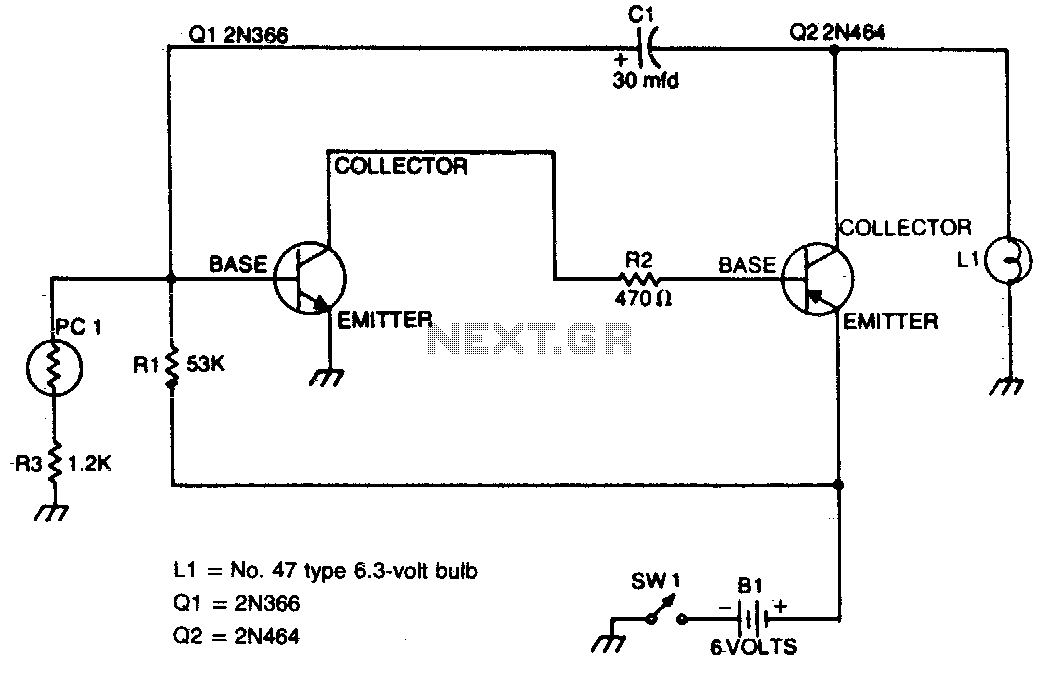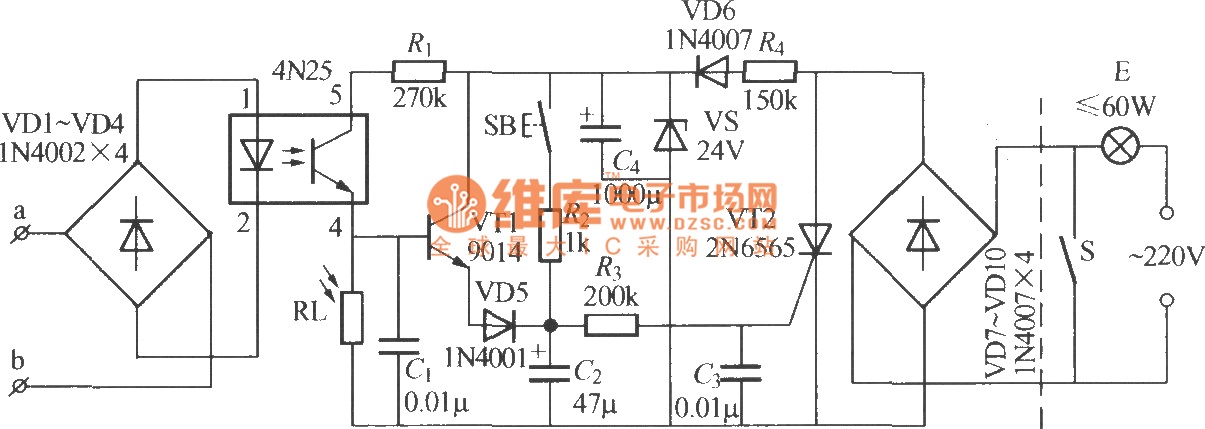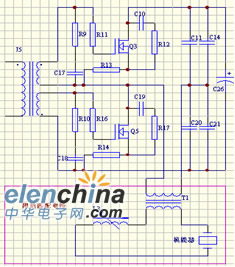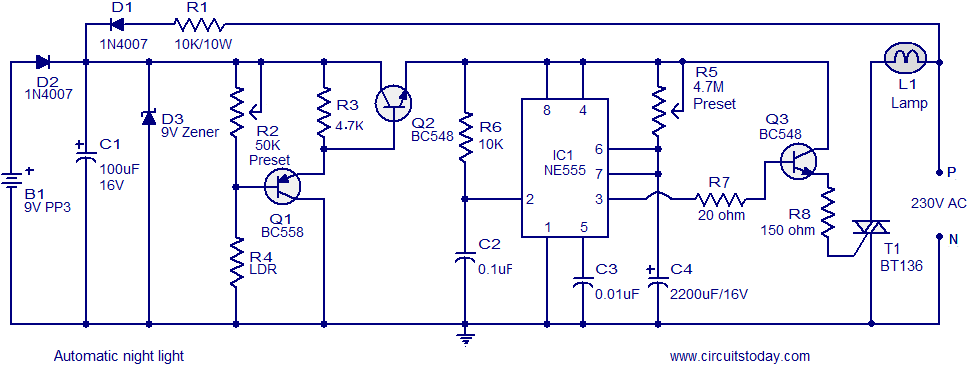
Automatic plant waterer
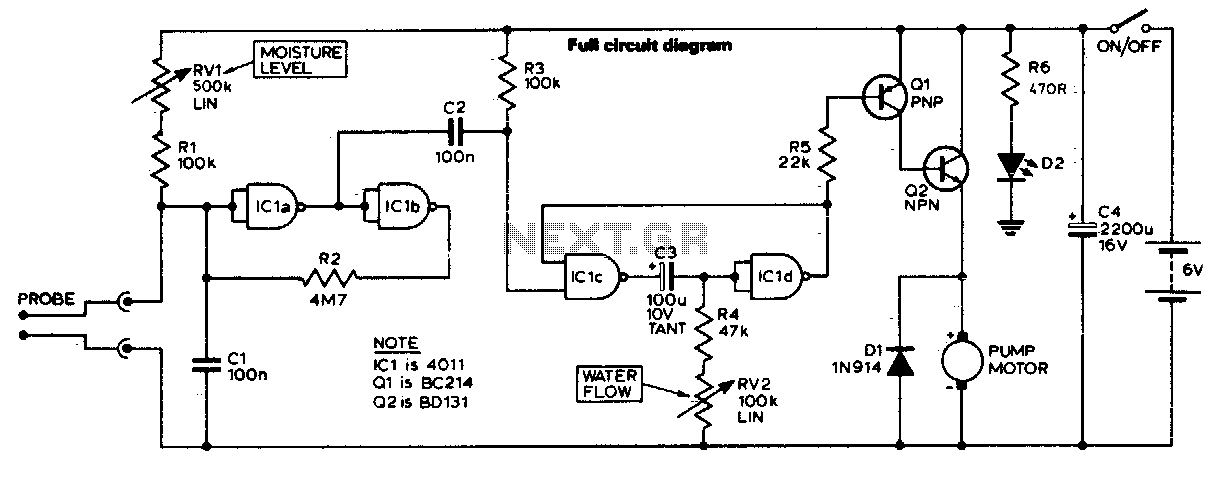
The unit consists of a sensor, timer, and electric water pump. The sensor is embedded in the soil, and when dry, the electronics operate the water pump for a preset time. The circuit is composed of a level-sensitive Schmitt trigger, variable time monostable, and output driver. When the resistance across the probe increases beyond a set value (i.e., the soil dries), the Schmitt is triggered. A capacitor (C2) provides a negative-going pulse to the monostable when the Schmitt trigger activates, while resistor R2 functions as feedback to ensure rapid switching action.
The described unit operates as an automated irrigation system, utilizing a soil moisture sensor to monitor the moisture content of the soil. The sensor's resistance changes with the moisture level; when the soil becomes too dry, the resistance increases beyond a predefined threshold. This change is detected by the level-sensitive Schmitt trigger, which provides a clean transition between its high and low states, thereby eliminating noise and ensuring reliable operation.
Upon activation of the Schmitt trigger, a negative pulse is generated by capacitor C2, which is connected to the monostable timer circuit. This monostable configuration is designed to output a single pulse of a predetermined duration, which can be adjusted based on the required watering time. The output from the monostable is then directed to the output driver, which activates the electric water pump.
Resistor R2 plays a crucial role in the feedback loop of the circuit, enhancing the switching speed of the Schmitt trigger. This feedback mechanism allows for a quick response to changes in soil moisture, ensuring that the pump operates efficiently and only when necessary. The overall design of this circuit provides a reliable and automated solution for maintaining optimal soil moisture levels, contributing to efficient water usage in irrigation systems.The unit consists of a sensor, timer, and electric water pump. The sensor is embedded in the soil, and when dry, the electronics operate the water pump for a preset time. The circuit is composed of a level sensitive Schmitt trigger, variable time monostable, and output driver.
When the resistance across the probe increases beyond a set value (ie, the soil dries), the Schmitt is triggered C2 feeds a negative going pulse to the monostable when the Schmitt triggers and R2 acts as feedback, to ensure a fast switching action.
The described unit operates as an automated irrigation system, utilizing a soil moisture sensor to monitor the moisture content of the soil. The sensor's resistance changes with the moisture level; when the soil becomes too dry, the resistance increases beyond a predefined threshold. This change is detected by the level-sensitive Schmitt trigger, which provides a clean transition between its high and low states, thereby eliminating noise and ensuring reliable operation.
Upon activation of the Schmitt trigger, a negative pulse is generated by capacitor C2, which is connected to the monostable timer circuit. This monostable configuration is designed to output a single pulse of a predetermined duration, which can be adjusted based on the required watering time. The output from the monostable is then directed to the output driver, which activates the electric water pump.
Resistor R2 plays a crucial role in the feedback loop of the circuit, enhancing the switching speed of the Schmitt trigger. This feedback mechanism allows for a quick response to changes in soil moisture, ensuring that the pump operates efficiently and only when necessary. The overall design of this circuit provides a reliable and automated solution for maintaining optimal soil moisture levels, contributing to efficient water usage in irrigation systems.The unit consists of a sensor, timer, and electric water pump. The sensor is embedded in the soil, and when dry, the electronics operate the water pump for a preset time. The circuit is composed of a level sensitive Schmitt trigger, variable time monostable, and output driver.
When the resistance across the probe increases beyond a set value (ie, the soil dries), the Schmitt is triggered C2 feeds a negative going pulse to the monostable when the Schmitt triggers and R2 acts as feedback, to ensure a fast switching action.
